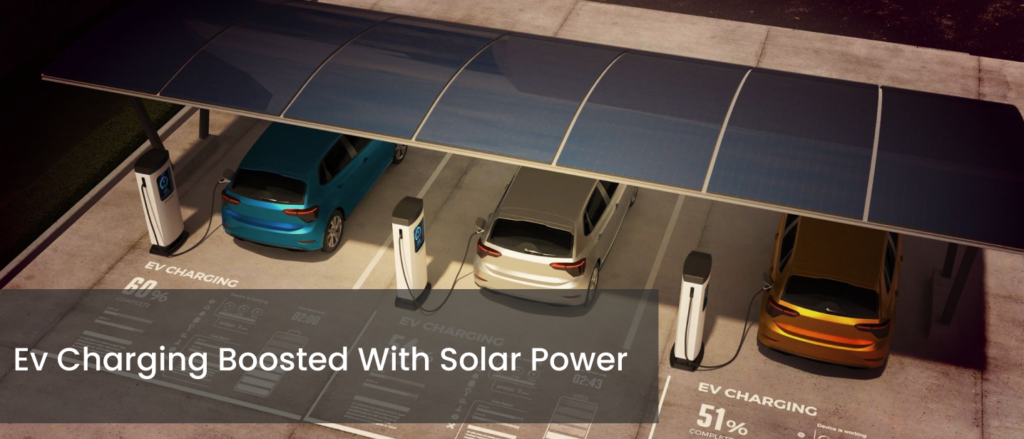Now, Australia is all ready to gear up for a bright and perfect future in electric vehicle (EV) infrastructure by adding solar energy to the charging network. An excellent combination of both is a sustainable and efficient approach to meet the increasing demand for clean transportation.
While installing solar panels at EV charging stations nationwide, the strategic move is different. This new technology initiative really aligns with Australia’s commitment to renewable energy and greener tributes to energy security and grid resilience.
Moreover, Australia’s abundant sunlight makes it well-suited for solar energy utilization. The country’s vast land area allows for the installation of large-scale solar farms, facilitating the generation of clean energy for widespread EV charging infrastructure. As the EV market grows globally, Australia’s commitment to sustainable practices positions it as a leader in fostering eco-friendly transportation solutions.
The Australian Federal Government is mainly targeting a big reduction in greenhouse gas emissions, especially from the transport sector, and a shift away from dirty energy sources through the promotion of EV adoption and the development of appropriate charging infrastructure. EV charging is mainly characterized by substantial growth, nearly doubling its capacity in less than two years. According to the data from June 2022, the country boasted 2,147 active public charging stations, each housing 3,669 individual public EV chargers. This represents a 56% increase from the 1,376 charging stations observed in 2020.
The charging infrastructure comprises diverse networks, power levels, current types (AC/DC), and geographical locations, aiming to cater to the evolving needs of the expanding EV driver community.
Australia’s abundant sunlight has the potential to accelerate the growth of electric vehicles (EVs) and mirror initiatives seen in France, where solar PV canopies are set to be mandated for public car parks.
Power emphasizes that Australia’s high solar PV installations and forthcoming vehicle-to-grid (V2G) technology could drive further EV growth. Similar To France’s initiative, adopting solar carports should substantially increase electricity generation and provide additional benefits such as shading and cooling for parked cars. Investment in public charging infrastructure is crucial for expediting the transition to EVs, as Australia currently lags behind other leading economies in this aspect. The fear is that within may struggle to keep pace with the rising global adoption of EVbe without a mix of tax breaks and infrastructure investment. While EVs constitute about 7.4% of new car sales in Australia this year, the UK and Norway have higher adoption rates, highlighting the need for proactive measures in Australia.
Types of EV Charging Stations:
The Australian electric vehicle-charging infrastructure features different kinds of individual public EV chargers available. Their power level and current type usually categorize these.
Regular EV charging stations feature AC or DC power to charge the vehicles. The power level for these charging stations goes up to 24 kW.
Fast EV charging locations feature individual EV chargers that use DC power to charge the vehicle. The power level for these EV chargers goes from 24 kW up to 99 kW DC.
In Australia, Ultrafast EV charging stations feature the EV infrastructure’s highest power level chargers. These chargers use DC power with a 100 kW or above power level.
In Australia, the electric vehicle charging infrastructure is distributed across different types of chargers, each catering to varying charging needs.
Here’s a breakdown of the charging stations based on their power levels:
Regular EV Charging Stations:
– Number: 1,791 stations
– Power Level: Up to 24 kW
– Charging Time (for a 60 kWh battery): Approximately 2 hours and 30 minutes
– Note: Many public charging stations feature three-phase EV chargers.
Fast EV Charging Locations:
– Number: 274 locations
– Power Range: 24 kW to 99 kW
– Charging Time (for a 60 kWh battery):
– 2 hours and 30 minutes for 24 kW EV chargers
– 36 minutes for 99 kW chargers
Ultrafast EV Charging Locations:
– Number: 82 locations
– Power Level: 100 kW or higher
– Charging Time (0% to 80% battery): Less than 30 minutes
This diverse infrastructure in EVs provides users with many vast options, allowing them to choose charging stations based on their time constraints and power requirements.
Adding up to this whole thing in conclusion, adding solar power energy with Australia’s EV charging network signals is a positive step toward a clean, green, and more sustainable future. By leveraging abundant sunlight, the country aims to power EVs with renewable energy, reducing environmental impact and contributing to the global shift towards a greener and more energy-efficient transportation landscape.


You have noted very interesting details! ps nice web site.Blog monry